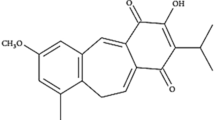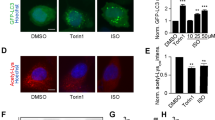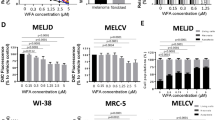Abstract
Agents that interfere with tumoral immune tolerance may be useful to prevent or treat cancer. Brassinin is a phytoalexin, a class of natural products derived from plants that includes the widely known compound resveratrol. Brassinin has been demonstrated to have chemopreventive activity in preclinical models but the mechanisms underlying its anticancer properties are unknown. Here, we show that brassinin and a synthetic derivative 5-bromo-brassinin (5-Br-brassinin) are bioavailable inhibitors of indoleamine 2,3-dioxygenase (IDO), a pro-toleragenic enzyme that drives immune escape in cancer. Like other known IDO inhibitors, both of these compounds combined with chemotherapy to elicit regression of autochthonous mammary gland tumors in MMTV-Neu mice. Furthermore, growth of highly aggressive melanoma isograft tumors was suppressed by single agent treatment with 5-Br-brassinin. This response to treatment was lost in athymic mice, indicating a requirement for active host T-cell immunity, and in IDO-null knockout mice, providing direct genetic evidence that IDO inhibition is essential to the antitumor mechanism of action of 5-Br-brassinin. The natural product brassinin thus provides the structural basis for a new class of compounds with in vivo anticancer activity that is mediated through the inhibition of IDO.
This is a preview of subscription content, access via your institution
Access options
Subscribe to this journal
Receive 50 print issues and online access
$259.00 per year
only $5.18 per issue
Buy this article
- Purchase on Springer Link
- Instant access to full article PDF
Prices may be subject to local taxes which are calculated during checkout





Similar content being viewed by others
References
Baban B, Chandler P, McCool D, Marshall B, Munn DH, Mellor AL . (2004). Indoleamine 2,3-dioxygenase expression is restricted to fetal trophoblast giant cells during murine gestation and is maternal genome specific. J Reprod Immunol 61: 67–77.
Brandacher G, Perathoner A, Ladurner R, Schneeberger S, Obrist P, Winkler C et al. (2006). Prognostic value of indoleamine 2,3-dioxygenase expression in colorectal cancer: effect on tumor-infiltrating T cells. Clin Cancer Res 12: 1144–1151.
Cardiff RD, Wellings SR . (1999). The comparative pathology of human and mouse mammary glands. J Mammary Gland Biol Neoplasia 4: 105–122.
Chemoprevention Working Group (1999). Prevention of cancer in the next millennium: Report of the Chemoprevention Working Group to the American Association for Cancer Research. Cancer Res 59: 4743–4758.
Csomos P, Zupko I, Rethy B, Fodor L, Falkay G, Bernath G . (2006). Isobrassinin and its analogues: novel types of antiproliferative agents. Bioorg Med Chem Lett 16: 6273–6276.
Davis ME, Brewster ME . (2004). Cyclodextrin-based pharmaceutics: past, present and future. Nat Rev Drug Discov 3: 1023–1035.
Gaspari P, Banerjee T, Malachowski WP, Muller AJ, Prendergast GC, Duhadaway J et al. (2006). Structure-activity study of brassinin derivatives as indoleamine 2,3-dioxygenase inhibitors. J Med Chem 49: 684–692.
Grohmann U, Orabona C, Fallarino F, Vacca C, Calcinaro F, Falorni A et al. (2002). CTLA-4-Ig regulates tryptophan catabolism in vivo. Nat Immunol 3: 1097–1101.
Guy CT, Webster MA, Schaller M, Parsons TJ, Cardiff RD, Muller WJ . (1992). Expression of the neu protooncogene in the mammary epithelium of transgenic mice induces metastatic disease. Proc Natl Acad Sci USA 89: 10578–10582.
Hayaishi O, Ryotaro Y, Takikawa O, Yasui H . (1984). Indoleamine-dioxygenase—a possible biological function. Progress in Tryptophan and Serotonin Research. Walter De Gruyter and Co.: Berlin. pp 33–42.
Hou DY, Muller AJ, Sharma MD, DuHadaway J, Banerjee T, Johnson M et al. (2007). Inhibition of indoleamine 2,3-dioxygenase in dendritic cells by stereoisomers of 1-methyl-tryptophan correlates with antitumor responses. Cancer Res 67: 792–801.
Ino K, Yoshida N, Kajiyama H, Shibata K, Yamamoto E, Kidokoro K et al. (2006). Indoleamine 2,3-dioxygenase is a novel prognostic indicator for endometrial cancer. Br J Cancer 95: 1555–1561.
Malachowski WP, Metz R, Prendergast GC, Muller AJ . (2005). A new cancer immunosuppression target: indoleamine 2,3-dioxygenase (IDO). A review of the IDO mechanism, inhibition and therapeutic applications. Drugs Fut 30: 897.
Mehta RG, Liu J, Constantinou A, Thomas CF, Hawthorne M, You M et al. (1995). Cancer chemopreventive activity of brassinin, a phytoalexin from cabbage. Carcinogenesis 16: 399–404.
Mellor AL, Munn DH . (2004). IDO expression by dendritic cells: tolerance and tryptophan catabolism. Nat Rev Immunol 4: 762–774.
Mezencev R, Mojzis J, Pilatova M, Kutschy P . (2003). Antiproliferative and cancer chemopreventive activity of phytoalexins: focus on indole phytoalexins from crucifers. Neoplasma 50: 239–245.
Muller AJ, Duhadaway JB, Donover PS, Sutanto-Ward E, Prendergast GC . (2005). Inhibition of indoleamine 2,3-dioxygenase, an immunoregulatory target of the cancer suppression gene Bin1, potentiates cancer chemotherapy. Nat Med 11: 312–319.
Muller AJ, Scherle PA . (2006). Targeting the mechanisms of tumoral immune tolerance with small-molecule inhibitors. Nat Rev Cancer 6: 613–625.
Muller KO . (1958). Studies on phytoalexins. Aust J Biol Sci 11: 275–330.
Munn DH, Sharma MD, Hou D, Baban B, Lee JR, Antonia SJ et al. (2004). Expression of indoleamine 2,3-dioxygenase by plasmacytoid dendritic cells in tumor-draining lymph nodes. J Clin Invest 114: 280–290.
Munn DH, Zhou M, Attwood JT, Bondarev I, Conway SJ, Marshall B et al. (1998). Prevention of allogeneic fetal rejection by tryptophan catabolism. Science 281: 1191–1193.
Murillo G, Mehta RG . (2001). Cruciferous vegetables and cancer prevention. Nutr Cancer 41: 17–28.
Okamoto A, Nikaido T, Ochiai K, Takakura S, Saito M, Aoki Y et al. (2005). Indoleamine 2,3-dioxygenase serves as a marker of poor prognosis in gene expression profiles of serous ovarian cancer cells. Clin Cancer Res 11: 6030–6039.
Park EJ, Pezzuto JM . (2002). Botanicals in cancer chemoprevention. Cancer Metastasis Rev 21: 231–255.
Pilatova M, Sarissky M, Kutschy P, Mirossay A, Mezencev R, Curillova Z et al. (2005). Cruciferous phytoalexins: antiproliferative effects in T-Jurkat leukemic cells. Leuk Res 29: 415–421.
Quezada SA, Peggs KS, Curran MA, Allison JP . (2006). CTLA4 blockade and GM-CSF combination immunotherapy alters the intratumor balance of effector and regulatory T cells. J Clin Invest 116: 1935–1945.
Sabol M, Kutschy P, Siegfried L, Mirossay A, Suchy M, Hrbkova H et al. (2000). Cytotoxic effect of cruciferous phytoalexins against murine L1210 leukemia and B16 melanoma. Biologia, Bratislava 55: 701–707.
Skehan P, Storeng R, Scudiero D, Monks A, McMahon J, Vistica D et al. (1990). New colorimetric cytotoxicity assay for anticancer-drug screening. J Natl Cancer Inst 82: 1107–1112.
Takasugi M, Monde K, Nobukatsu K, Shirata A . (1988). Novel sulfur-containing phytoalexins from the Chinese cabbage Brassica campestris L. ssp. pekinesis (Cruciferae). Bull Chem Soc Jpn 61: 285–289.
Takasugi M, Nobukatsu K, Shirata A . (1986). Isolation of three novel sulphur-containing phytoalexins from the Chinese cabbage Brassica campestris L. ssp. pekinesis (Cruciferae). J Chem Soc Chem Commun, 1077–1078.
Thomson JA, Troutt AB, Kelso A . (1993). Contact sensitization to oxazolone: involvement of both interferon-gamma and interleukin-4 in oxazolone-specific Ig and T-cell responses. Immunology 78: 185–192.
Acknowledgements
AJM is the recipient of grants from the DoD Breast Cancer Research Program (BC044350), the State of Pennsylvania Department of Health (CURE/Tobacco Settlement Award), the Lance Armstrong Foundation and the Concern Foundation. GCP is the recipient of NIH R01 grants CA82222, CA100123 and CA109542. Additional support for this project was provided by grants to GCP from the Charlotte Geyer Foundation and the Lankenau Hospital Foundation.
Author information
Authors and Affiliations
Corresponding author
Rights and permissions
About this article
Cite this article
Banerjee, T., DuHadaway, J., Gaspari, P. et al. A key in vivo antitumor mechanism of action of natural product-based brassinins is inhibition of indoleamine 2,3-dioxygenase. Oncogene 27, 2851–2857 (2008). https://doi.org/10.1038/sj.onc.1210939
Received:
Revised:
Accepted:
Published:
Issue Date:
DOI: https://doi.org/10.1038/sj.onc.1210939
Keywords
This article is cited by
-
The immunosuppressive role of indoleamine 2, 3-dioxygenase in glioblastoma: mechanism of action and immunotherapeutic strategies
Medical Oncology (2022)
-
What is the prospect of indoleamine 2,3-dioxygenase 1 inhibition in cancer? Extrapolation from the past
Journal of Experimental & Clinical Cancer Research (2021)
-
Advances in plant-derived natural products for antitumor immunotherapy
Archives of Pharmacal Research (2021)
-
Immune gene signatures for predicting durable clinical benefit of anti-PD-1 immunotherapy in patients with non-small cell lung cancer
Scientific Reports (2020)
-
Design, synthesis, and biological evaluation of novel 5-bromo derivatives of indole phytoalexins
Monatshefte für Chemie - Chemical Monthly (2020)



